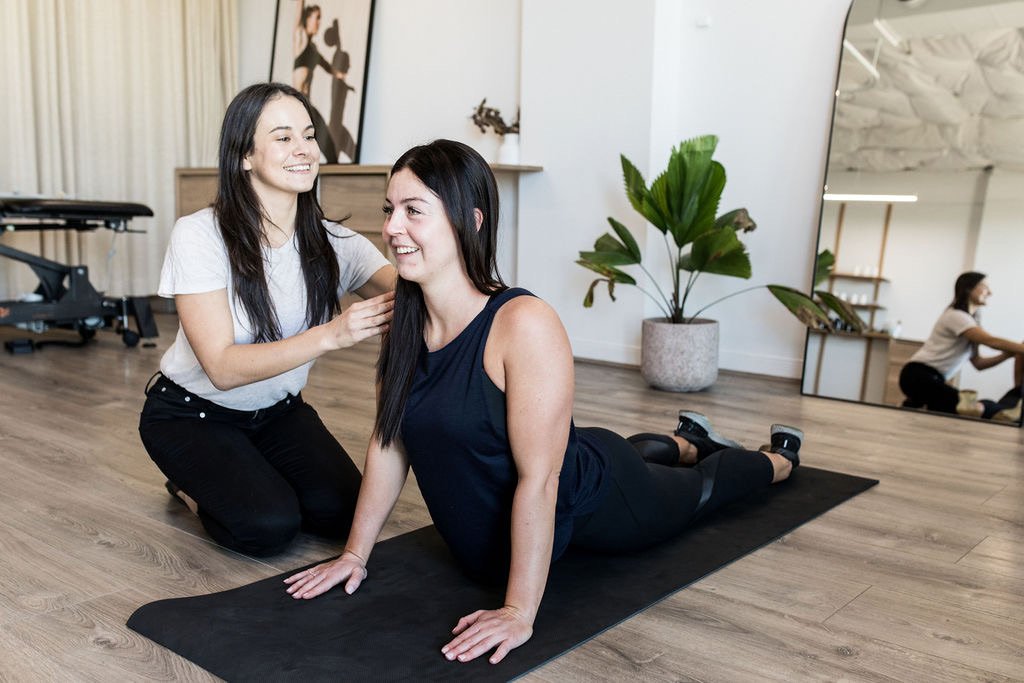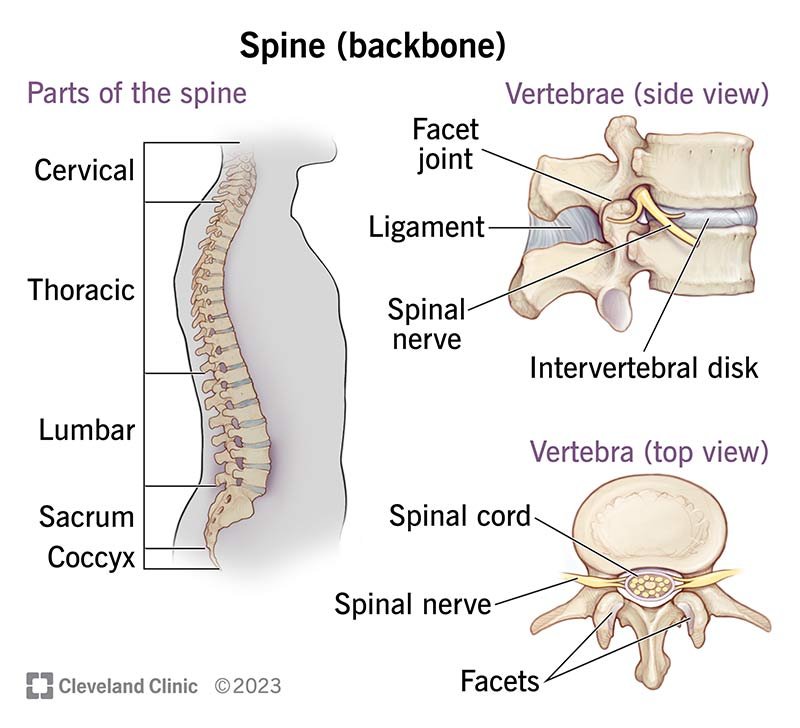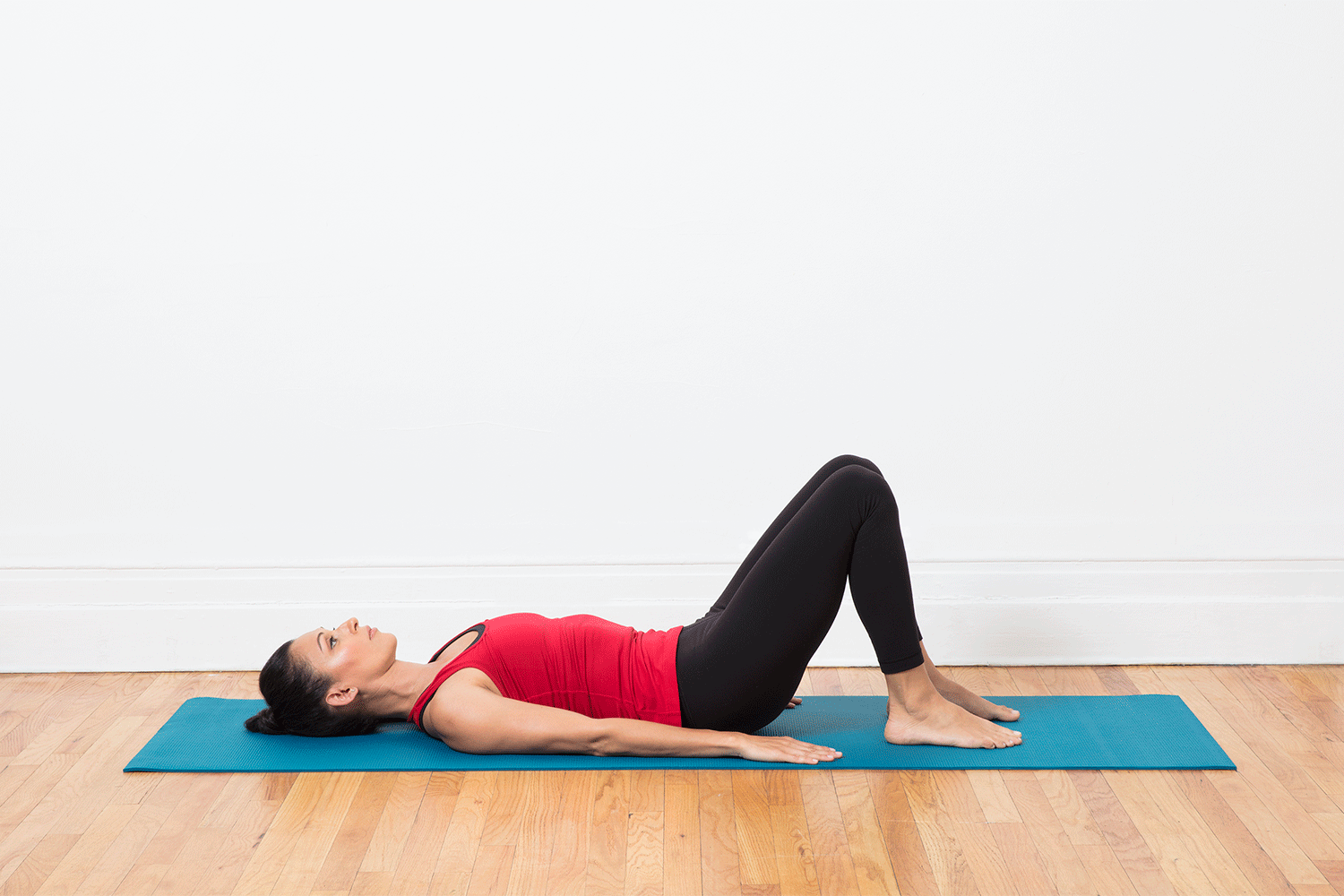Best Lower Back Exercises That You Can Do From Home
Strengthening your lower back is essential for maintaining a healthy posture and preventing discomfort.
In this blog, we'll unveil a curated list of best lower back exercises that require minimal equipment and space and can be done at home.
Whether you're a beginner or a fitness enthusiast, these routines cater to all levels of expertise. But before we delve into some of the best exercises to strengthen the back, let’s first learn about the lower back and some common causes of lower back pain.
What comprises the lower back?
The lower back, also known as the lumbar region, is the area of the back located between the ribcage and the pelvis. It is a critical part of the spine in supporting the upper body, enabling movement, and protecting the spinal cord and nerves. The lower back is made up of several important structures, including:
Vertebrae: The lower back consists of five lumbar vertebrae, labeled L1 to L5, which are the largest and strongest vertebrae in the spine. These vertebrae provide stability and support for the upper body while allowing flexibility and movement.
Intervertebral Discs: Between each lumbar vertebra, there are intervertebral discs that act as shock absorbers and help cushion the vertebra during movement. These discs have a soft, gel-like center called the nucleus pulposus, surrounded by a tougher outer layer called the annulus fibrosus.
Spinal Cord and Nerves: The spinal cord runs through the center of the vertebrae, and nerves branch out from the spinal cord through openings of the vertebrae. These nerves extend throughout the lower back and into the legs, allowing the muscles to move and to feel the sensations on our skin.
Muscles and Ligaments: Numerous muscles and ligaments surround the lower back, providing support and stability during movement. The muscles include the erector spinae, quadratus lumborum, and various abdominal muscles, while the ligaments connect the vertebrae and provide additional support.
Facet Joints: Facet joints are small, synovial joints located between the vertebrae. They allow for controlled movement and stabilization of the spine.
Sacrum: The sacrum is a triangular-shaped bone located below the lumbar vertebrae and forms the back wall of the pelvis. It connects the spine to the hip bones (ilium) on either side.
What is the role of the lower back in movement?
The lower back or lumbar region plays an important role in movement and support for the body. It helps our body stand, walk, run, bend, lift and twist. The primary functions of the lower back in movement include:
Support and Stability: It acts as a strong and stable support structure for the upper body. It helps maintain an upright posture and distributes the weight of the rest of the body evenly.
Flexion and Extension: Flexion is the forward bending movement of the spine and extension is the backward arching of the spine. This allows us to do movements like pick an item up off the ground and to arch backward to stand up straight
Lateral Flexion: Lateral flexion is the side bending movement of the spine. This allows us to bend from side to side.
Rotation: Rotation is the twisting movement of the spine. This allows us to twist our body from side to side.
Force Transfer and Lifting Capacity: The lumbar spine works with the abdominal and pelvic floor muscles to stabilise the spine and protect it from excessive stress during lifting or carrying activities
Postural Control: The lumbar spine contributes to maintaining alignment of the spine while sitting, standing or performing activities like bending down to pick an item off the floor or throwing a ball during a football match.
Understanding the anatomy and the role of the lower back is crucial for several reasons. First and foremost, it empowers individuals to make informed decisions about their fitness routines and lifestyle choices. Some of the best lower back exercises to minimize discomfort target and strengthen specific areas of the spine that are involved in daily movements. By grasping the complex interplay of muscles, bones, and ligaments in the lower back region, one can tailor exercises and activities that promote strength and flexibility while minimizing the risk of injury.
Moreover, awareness of lower back anatomy enhances body awareness, enabling individuals to recognize early signs of discomfort or strain. This knowledge also facilitates effective communication with healthcare professionals, allowing for accurate diagnosis and personalized treatment plans if issues arise.
Causes of lower back stiffness and pain
Lower back stiffness and pain can result from a combination of internal and external factors. Understanding these factors can help in managing and preventing lower back issues. Here are some of the internal and external factors that can contribute to lower back stiffness and pain:
Internal Factors
Muscle Imbalances
Weakness or tightness in certain muscles of the lower back and core can lead to an imbalance, affecting spinal alignment and causing stiffness and pain.
Age-Related Changes
As we age, the discs in the spine may degenerate, and joint tissues may wear down, leading to conditions like degenerative disc disease and osteoarthritis, which can cause lower back pain and stiffness.
Genetics
Some individuals may have a genetic predisposition to certain spine-related conditions, such as scoliosis, which can lead to lower back issues.
Structural Abnormalities
Certain congenital conditions, such as spondylolisthesis (when one vertebra slips over another), can cause lower back pain.
Inflammatory Conditions
Conditions like rheumatoid arthritis and other inflammatory disorders can cause inflammation and stiffness in the lower back.
Psychological Factors
Stress, anxiety, and depression can contribute to muscle tension and may exacerbate lower back pain.
External Factors
Poor Posture
Prolonged sitting or standing with poor posture can strain the lower back and lead to stiffness and discomfort.
Lifting and Manual Handling
Incorrect lifting techniques and heavy lifting can strain the lower back muscles and ligaments, causing pain and stiffness.
Occupational Hazards
Jobs that involve repetitive movements, heavy lifting, or prolonged sitting can put individuals at a higher risk of developing lower back stiffness and pain.
Physical Activity
Sudden or intense physical activities without proper warm-up or conditioning can cause muscle strain and lower back pain.
Obesity
Excess weight puts additional stress on the lower back and can contribute to pain and stiffness.
Sedentary Lifestyle
Lack of physical activity and weak core muscles can contribute to lower back pain and stiffness.
Poor Sleep and Mattress
Inadequate sleep or using an unsupportive mattress can lead to lower back stiffness and pain.
Environmental Factors
Cold temperatures or excessive humidity can influence muscle stiffness and may contribute to lower back pain.
Trauma and Accidents
Injuries from falls, accidents, or sports-related incidents can cause lower back pain.
When do I see a chiro / physio for lower back pain?
People should consider seeing a manual health care professional, such as a chiropractor or physiotherapist, for their low back pain and stiffness under the following circumstances:
If you’re experiencing acute or severe pain that limits your mobility or affects your daily activities, seeking immediate evaluation and treatment from a manual health care professional is recommended.
If you have persistent or chronic pain in the low back that persists for more than a few days or becomes a recurring issue, it is essential to have it assessed by a manual health professional to identify the underlying cause and develop an appropriate treatment plan.
If you have difficulty moving your back or experience stiffness that restricts your flexibility, a manual health professional can help identify and address the factors contributing to the limitation.
If you have a history of lower back issues or injuries it's wise to seek professional evaluation to prevent further complications and develop strategies for long-term management.
If you experience pain after a lower back injury or accident due to a fall, sports-related injury, or any trauma to your back, consulting a manual health professional can aid in diagnosing and treating the injury.
If you are experiencing pain associated with radiculopathy in the lower back, that is tingling, or weakness that radiates down one or both legs (sciatica), a manual health professional can help diagnose and manage this condition.
If your lower back affects your walking pattern (gait) or balance it is essential to seek professional guidance to prevent further complications.
If your low back pain and stiffness interferes with your ability to perform everyday tasks, work, or exercise, seeking manual therapy can help you regain functionality.
If self-care measures do not provide relief, such as rest, gentle exercises, and over-the-counter pain relievers, it's advisable to consult a manual health professional for a more comprehensive evaluation and treatment plan.
Even if you do not currently have back pain, seeing a manual health professional for periodic check-ups and preventive care can help identify and address any issues before they become more significant problems.
If you’re dealing with lower back pain that was caused by one of these factors, it is recommended to see the right practitioner - either a physiotherapist or a chiropractor depending on the type of injury, for treatment. They will be able to recommend good back stretches and the best lower back exercises for your specific injury to help you strengthen weak areas in your back and prevent a re-injury.
Best lower back exercises you can do at home
Performing lower back exercises at home can help strengthen the muscles supporting the spine, and alleviate stiffness or discomfort. Good back stretches can further help improve flexibility. Here are some of the best lower back exercises that you can do at home:
1) Pelvic Tilt
Lie on your back with your knees bent and feet flat on the floor.
Gently contract your abdominal muscles to flatten your lower back against the floor, tilting your pelvis backward.
Hold for a few seconds, then release and return to a neutral position.
Repeat 10-15 times.
2) Cat-cow stretch
Start on your hands and knees in a tabletop position.
Inhale, arch your back, and lift your head and tailbone towards the ceiling (Cow Pose).
Exhale, round your back, tuck your chin, and draw your belly button towards your spine (Cat Pose).
Flow back and forth between Cow and Cat Poses for 1-2 minutes.
3) Bird-dog exercise
Begin on your hands and knees in a tabletop position.
Extend your right arm forward and your left leg backward, maintaining a straight line from fingertips to toes.
Hold for a few seconds, engaging your core for stability.
Lower your arm and leg back down, then repeat on the opposite side.
Do 10-12 repetitions on each side.
4) Bridge exercise
Lie on your back with your knees bent and feet flat on the floor, hip-width apart.
Press through your heels and lift your hips towards the ceiling, squeezing your glutes and engaging your core.
Hold for a few seconds at the top, then lower your hips back down.
Repeat 10-15 times.
5) Child’s pose
Sit on your heels with your knees spread wide apart.
Lower your torso forward, reaching your arms out in front of you and resting your forehead on the floor.
Hold the stretch for 30 seconds to 1 minute, focusing on deep breathing and relaxation.
6) Knee-to-chest stretch
Lie on your back with your knees bent and feet flat on the floor.
Bring one knee towards your chest, clasping your hands around it.
Hold the stretch for 20-30 seconds, feeling the stretch in your lower back.
Switch to the other leg and repeat.
Always remember to listen to your body and avoid any exercises that cause pain or discomfort. If you have a history of back issues or significant pain, it's essential to consult with a healthcare professional before starting any exercise program. They can provide personalized guidance and ensure that the exercises are safe and appropriate for your specific condition.
In Conclusion,
In conclusion,
The lower back, or lumbar region, is the supportive and strong part of the spine, consisting of lumbar vertebrae, intervertebral discs, spinal cord, nerves, muscles, ligaments, facet joints, and the sacrum. It plays a crucial role in supporting the upper body, enabling movement, and protecting the spinal cord and nerves.
The lower back's role in movement includes providing support and stability, allowing flexion and extension, lateral flexion, rotation, force transfer, and maintaining postural control. However, lower back stiffness and pain can be caused by a combination of internal factors like muscle imbalances, age-related changes, genetics, and inflammatory conditions, as well as external factors like poor posture, lifting and manual handling, sedentary lifestyle, obesity, and trauma.
When experiencing low back pain and stiffness, seeking help from a chiropractor or physiotherapist, can be beneficial. Consider consulting them if you have acute or severe pain, chronic pain, limited range of motion, previous history of low back issues, pain after an injury, altered gait or balance issues, discomfort interfering with daily activities, lack of improvement with home remedies, or for preventive care and maintenance.
Additionally, performing specific lower back exercises at home can help strengthen the muscles and improve flexibility. Some of the best exercises to strengthen the back include pelvic tilts, cat-cow stretches, bird-dog exercises, bridges, child's pose, and knee-to-chest stretches. These can be effective in managing low back pain and stiffness. However, it's important to consult with a healthcare professional before starting any exercise program, especially if you have a history of back issues or significant pain, to ensure that the exercises are safe and suitable for you.
Looking to alleviate lower back pain?
Consult with one of our trusted physios today








